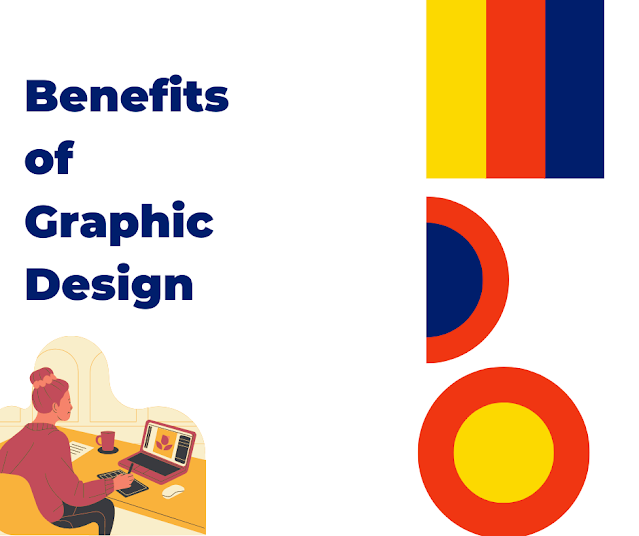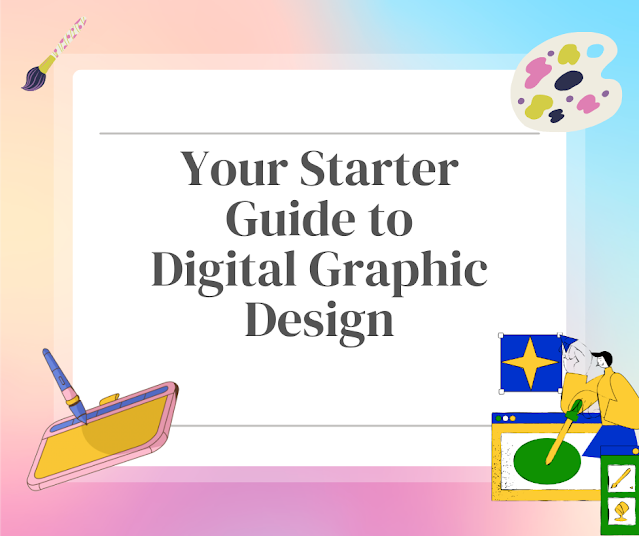Benefits of Graphic Design
Graphic design is a creative and visual communication discipline that combines art, technology, and communication to convey messages and ideas through images, typography, and layout. It involves the strategic use of design elements to create visually appealing and impactful materials.
Taking a graphic design course can be beneficial to gain knowledge and experience in this field as there are lots of benefits in Graphic Design.
Importance of graphic design in various fields
Graphic design plays a crucial role in numerous fields and industries, including
Marketing and Advertising: Graphic design is instrumental in creating eye-catching advertisements, brochures, social media graphics, and other promotional materials that attract and engage customers. It helps businesses effectively communicate their brand message and offerings.
Branding and Identity: Graphic design is essential for developing a strong brand identity. It involves creating logos, color schemes, typography, and visual elements that represent a company or organization. Consistent and cohesive branding helps build brand recognition, loyalty, and differentiation in the market.
Web and Digital Design: Websites, mobile apps, user interfaces, and online platforms heavily rely on graphic design to enhance user experience (UX) and user interface (UI). Well-designed interfaces and graphics improve usability, navigation, and overall engagement.
Print and Publication: Graphic design is integral to the creation of print materials such as magazines, newspapers, books, and posters. It involves layout design, typography, and imagery to ensure information is presented effectively and aesthetically.
Packaging and Product Design: Effective packaging design utilizes graphic elements to grab attention on store shelves and communicate the product's benefits and features. Graphic design also influences product design, ensuring the visual appeal and usability of products.
Education and Instructional Design: Graphic design is used in educational materials, textbooks, infographics, and e-learning platforms. Visual aids and well-designed instructional materials improve understanding, engagement, and retention of information.
Social and Environmental Awareness: Graphic design is a powerful tool for raising awareness and advocating for social causes and environmental issues. It helps in creating impactful visuals and campaigns that inspire action and change.
Enhancing Visual Communication
Graphic design plays a crucial role in enhancing visual communication by utilizing various techniques and strategies. Visual storytelling through graphic design allows designers to convey narratives, emotions, and ideas through compelling visuals. By carefully selecting and arranging images, typography, and other design elements, designers create engaging and impactful visuals that captivate the audience's attention and leave a lasting impression.
Moreover, graphic design improves communication with the target audience by utilizing visual cues and techniques to effectively convey messages. Through the use of color, typography, imagery, and layout, designers create designs that are visually appealing and facilitate clear and concise communication. They consider the target audience's preferences and characteristics, ensuring that the design resonates with them and effectively delivers the intended message.
Brand Identity and Recognition
Graphic design plays a pivotal role in creating a strong brand identity. By designing logos, selecting appropriate color schemes, and crafting consistent visual elements, designers establish a visual representation of the brand that aligns with its values and objectives. Building a cohesive brand identity through graphic design helps businesses stand out from the competition and enables customers to recognize and recall the brand more easily.
Consistency in branding elements is key to reinforcing brand recognition.
Graphic designers ensure that visual elements such as logos, typography, color schemes, and design styles are consistently applied across various marketing materials and touchpoints. This consistency enhances brand recognition and recall, instilling trust and familiarity among customers.
Professionalism and Credibility
Graphic design plays a significant role in establishing a professional and trustworthy image for businesses and organizations. By employing design principles, such as clean and polished layouts, appropriate typography, and high-quality visuals, graphic designers create designs that exude professionalism. These designs contribute to building a positive perception among customers and clients, positioning the business as credible and reliable.
Through thoughtful and strategic design choices, graphic designers enhance the credibility of businesses or organizations.
They consider the target audience, industry standards, and brand values to create designs that align with the desired perception. A visually cohesive and professional design aesthetic strengthens the trustworthiness and credibility of the brand, establishing a positive reputation in the market.
Increasing Marketing Effectiveness
Graphic design plays an integral role in marketing campaigns by creating visually appealing and attention-grabbing materials.
Designers utilize their expertise in layout, color psychology, and visual composition to attract attention, differentiate from competitors, and make a memorable impact.
By combining compelling visuals with persuasive messaging, graphic design effectively conveys key messages, promotes products or services, and influences customer behavior.
User Experience and Interface Design
Graphic design significantly contributes to improving user experience (UX) and interface design. By creating intuitive and visually pleasing interfaces, designers enhance the usability and ease of navigation for users. They carefully consider user interactions, information hierarchy, and visual cues to create designs that facilitate a seamless and enjoyable user experience.
Visual elements such as icons, buttons, and visual feedback are designed to enhance usability and guide users through the interface, ensuring a positive interaction with the product or platform.
Versatility and Adaptability
Graphic design offers versatility and adaptability, catering to various mediums and platforms. Designers create designs that can be seamlessly adapted for both print and digital formats, ensuring consistency across different channels. They understand the requirements and limitations of each medium and adapt designs accordingly, considering factors such as resolution, color profiles, and screen sizes.
The flexibility of graphic design allows for easy modifications and updates, ensuring that designs remain relevant and effective over time.
Conclusion:
There are numerous benefits of Graphic design, it provides benefits across various aspects of business and communication. It enhances visual communication by creating visually appealing designs and effectively conveying messages through visuals.
Graphic design plays a vital role in building a strong brand identity, increasing brand recognition, and establishing professionalism and credibility.
It also contributes to boosting marketing effectiveness, improving user experience and interface design, and providing versatility and adaptability in design solutions. Moreover, graphic design has a direct impact on sales and conversions by influencing customer buying decisions and facilitating the conversion of leads into customers through effective design strategies. By leveraging the power of design, businesses can enhance their overall success and connect with their target audience on a deeper level.



Comments
Post a Comment